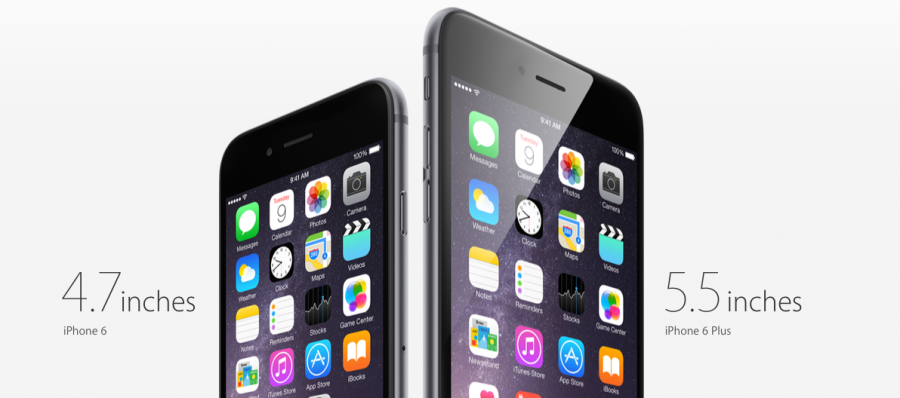It’s durability, not style, that should be improving in iPhones
Photo courtesy of www.apple.com. The new generation of iPhone, iPhone 6 and iPhone 6 Plus, was introduced on Sept. 17.
December 14, 2014
Let’s be honest – almost every high schooler can be caught with an iPhone in their hands, whether it be in the middle of a conversation, at a party or even during class. On June 29, 2007, the very first generation of the iPhone was released, and since then, newer versions have been appearing, all with different apps and features that entice consumers to spend their money on them. One noticeable difference between the iPhones is size, each progressively becoming larger than its previous generation; however, something that hasn’t been changing is their durability.
Apple continues to claim that its newer iPhones are becoming more resistant to harsh conditions, specifically against dropping them–which everyone has done at least once, even I’ll admit it. Apple employers have done many tests with their phones, showing to the public eye that iPhones appear to be almost “indestructible.” Yet, when people outside of the company have done their own experiments, the results seem otherwise contradictory to Apple’s claims.
Hundreds of videos have been posted on YouTube and other websites proving the true durability of iPhones, and how, for example, when dropped from chest height, a common place for someone to hold his/her phone, the phone cover shatters and the sides and corners themselves earn small dents and scuffs. Not only that, but there have also been quite a few articles discussing this issue with iPhones and what they’ve discovered about the true strength of the iPhone’s body. People and groups, such as PhoneBuff and TechRax, have shown that the iPhones, including the iPhone 6 and 6 Plus, are not all as shatterproof as they seem to be.
In PhoneBuff’s video, “iPhone 6 and 6 Plus Drop Test!”, host David Rahimi dropped the two most recent iPhone models on their backs, sides and front. The backs faired pretty well, and the iPhone 6 suffered minor scuffs on its side drop, but after that, it went all downhill. The iPhone 6 Plus’s front cracked when dropped on both its side and front, while the iPhone 6 had extremely noticeable cracks after only its front drop.
During TechRax’s iPhone drop video, “iPhone 6 Plus vs 6 vs 5S vs 5C vs 5 vs 4S vs 4 vs 3GS vs 3G vs 2G Drop Test!”, as obviously told from the title, every single generation of the iPhone was tested in drops on their sides and fronts, and it was found that all the iPhones except for the iPhone 3GS–which he admitted was somewhat of an enigma and was not dropped in the same manner compared to the other iPhones, possibly being the reason behind the confusion–suffered major cracks on their screens after drops, and a few even suffered problems with their functionality after the tests. The cracks did get lighter, however, but the amount of cracks looked to be fairly similar across the board.
Yes, there have been thousands of articles posted about the strength and improving quality of the Apple iPhones, and iPhone cases do add to the protection of the iPhone’s body, but after looking at multiple videos and stories written by ordinary people like ourselves, it looks like not everything is as clear as it seems. I believe that, in reality, all Apple has been focusing on is the style, appearance and features of each generation of iPhones, and less on its resistance to cracks and drops. Hopefully, iPhone will realize this problem soon enough, and will finally remove the fear everyone has when their phones fall face flat onto the concrete.
















